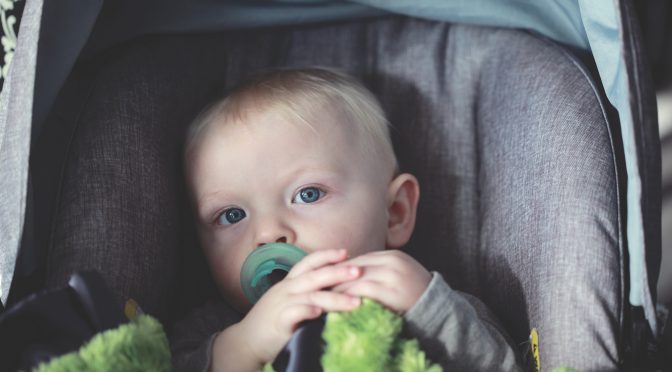A recent study by Jeffrey Colvin, M.D., resonates with any parent who has ever loaded an infant into a car seat. It has also caught the attention of news outlets like the TODAY Show, People Magazine, U.S. News and World Report and The New York Times.
Colvin’s team studied 10 years of data from 45 states on infant fatalities that occurred in car seats or other sitting devices, such as strollers and bouncers. His group found some startling information.
In a vast majority of these infant deaths, the car seat was not being used in the car. Instead, it was being used at the family’s home as a substitute for a crib or a bassinet. Less than 10 percent of those 348 deaths involved the car seat or sitting device being used for its intended purpose.
Colvin thinks these findings resonated with the public because all parents — himself included — have let their child sleep in a car seat. After all, he said, who hasn’t opted to let a baby sleep rather than jostling them awake to move them to a crib?
“In so many of the cases I studied, you see a reflection in something you yourself have done as a parent, or you remember times where you’ve done something very similar,” Colvin says.
Colvin stresses the importance of this information, not just for parents, but for any caregiver that may be in a child’s life, including grandparents, babysitters and family friends. Colvin says caretakers should remember the ABCs of safe sleep: Alone, Back and Crib. Every infant needs to sleep alone, on their back and in a crib or bassinet.
Colvin says his experience as a pediatrician at Children’s Mercy shaped how his team reacted to the information. Since the hospital is a safety-net provider for the area, its staff has a high sensitivity to, and experience with, low-income families. Studies have found that infant mortality is disproportionately high among this demographic.
“Our reaction to this finding wasn’t that parents weren’t acting in their children’s best interest,” Colvin says. “Our natural instinct was that the parents in these situations may not be able to afford cribs or bassinets. The car seat may be the only place they have to put their child to sleep, whether they’re homeless or don’t have the space to devote to a crib.”
The idea for this research started with one of Colvin’s residents during her residency at Children’s Mercy, specifically in the Neonatal Intensive Care Unit. She was curious about whether car seats played a role in sudden infant death syndrome (SIDS) or other related child deaths.
Colvin often works alongside residents or students on a research. In fact, he has a new student or resident, preferably someone who hasn’t had much opportunity in research, lead each project. This mentorship is critical to keeping Colvin’s work fresh and sustaining his joy in research.
“When you’re working with a student and this is their first time for everything, you re-experience not just the fear and anxiety of presenting to a ballroom of your peers, but also the excitement of having abstracts and manuscripts accepted,” he says.
Next up for Colvin is broadening the scope of his research by investigating health disparities among low-income families, specifically the disproportionately high rate of infant mortality. He’s studying how poverty affects that disparity and what risk factors associated with poverty might be modifiable.
Further down the road, Colvin hopes his work is less focused on risk factors and more focused on interventions. He says clearly identifying and quantifying risk factors could make it possible to take concrete action to reduce those stressors.
“If we can help families not only get a safe space for their infant to sleep but also help with those other stressors in their life, that will allow safe sleep to rise higher on their list of priorities.”



